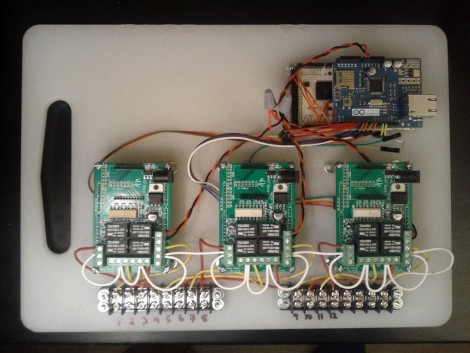
Because reaching over a few feet to turn off a switch is too much to bear for [Bruce], he connected his desk lamp to the Internet. It’s a pretty cool build that’s the perfect tutorial for connecting just about anything to the internet.
For his build, [Bruce] used an Arduino with a relay attached to an output pin. When the Arduino receives a signal on its serial port, a tiny voltage is applied to the relay, turning on the light.
This could have been done with an Arduino Ethernet, but the PHP script [Bruce] went with is a little more versatile. Whenever someone pulls up this digital light switch web page, they can turn [Bruce]’s desk lamp on and off.
For an introduction to connecting bare bones projects to the Internet, we’re really liking [Bruce]’s build. Just try no to go crazy with that link and leave the failure testing to the professionals. You can check out the demo video after the break.
















